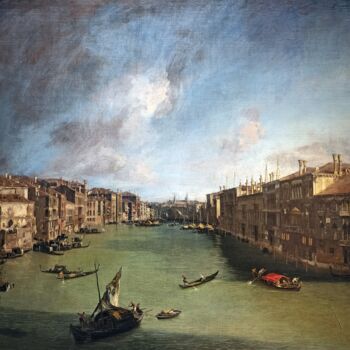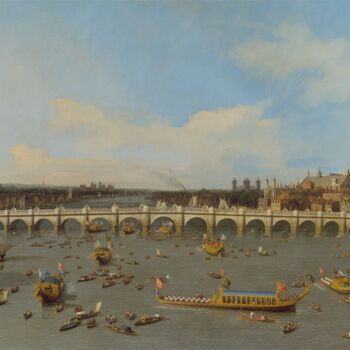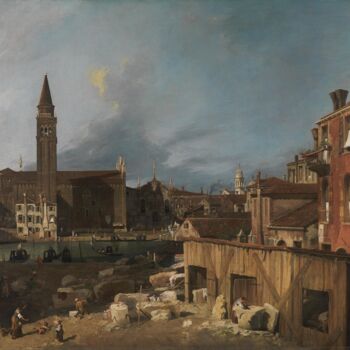The Entrance to the Grand Canal, Venice (1730) Pintura por Canaletto
Vendido por Artmajeur Editions
Esta impresión está disponible en varios tamaños.
Vendido por Artmajeur Editions
-
Obra de arte original
Pintura,
Oleo
en Lienzo
- Dimensiones Altura 19,5in, Anchura 29in
- Enmarcado Esta obra de arte no está enmarcada.
Temas relacionados
Giovanni Antonio Canal, also known as "Canaletto," was born in Venice on October 7, 1696. His father, a theater painter named Benedetto Canal, gave him his first lessons. Canaletto was a very good veduta painter (ital. "Veduta" - "Lookout" is a kind of landscape painting depicting the realistic cityscapes).
He used Camera Obscura to make his paintings look real. This Camera Obscura played with how people see things and was used to make pictures by blurring faraway things and painting them as if they were splashes of paint. The thing that made Canaletto stand out was that he painted directly from nature, while most other artists of his time spent most of their time in the studio.
When Canaletto got back from Rome in 1719, he started to work on his famously detailed, topographic style, which led to paintings that were very accurate. The light in the picture was so real that it made the scene feel especially bright.
His works were mostly about Venice's canals and Doge's palaces (e.g., "Series of Twelve Views of the Grand Canal"). The artist's unique take on city festivals and everyday life was very interesting. The perfect way the colors and lights work together draws the viewer into the picture and makes them feel like they know what is being shown. His use of local colors and the warm light of the Mediterranean gives his works an atmosphere that is similar to that of Impressionism.
In the 1820s, Canaletto was allowed to show his paintings at a public show in Present Venice. This was a good chance for artists who were just starting out to make a name for themselves. Giovanni Antonio made the most of this chance, which led to success and more orders.
Joseph Smith, an Englishman, was the most important person in Canaletto's life and work. After the works of the Venetian painter were added to Joseph Smith's famous collection, Canaletto got a lot more customers and orders because of this. The Chiesa della Carità or "The Workshop of Stonemasons" (1725–1726) was the best thing he ever did. Then came "The Bacino di San Marco on Ascension" (1733/34), and "Regatta on the Grand Canal" (around 1733/34).
But sales went down because of the War of Austrian Succession (1740–1748). The number of British visitors went down, so in 1746, Canaletto moved to England for nine years to be closer to its market. There, he painted pictures of the Thames and Westminster Bridge. He met the most important people in London and painted for them, including the Duke of Richmond.
In 1763, the artist was asked to join the Venetian Academy. He had finally moved back to Venice in 1755. His later works look much darker and more imaginative. They are not as realistic or idealistic, and are called "Capricci," which means "imaginary views."
Until he died in 1768, he lived and worked in Venice.
His pupils included his nephew Bernardo Bellotto, Francesco Guardi, Michele Marieschi, Gabriele Bella, Giuseppe Moretti and Giuseppe Bernardino Bison.
-
Nacionalidad:
ITALIA

- Fecha de nacimiento : 1696
- Dominios artísticos: Representado por una galería,
- Grupos: Artistas Italianos Contemporáneos Artistas presentados por una galería

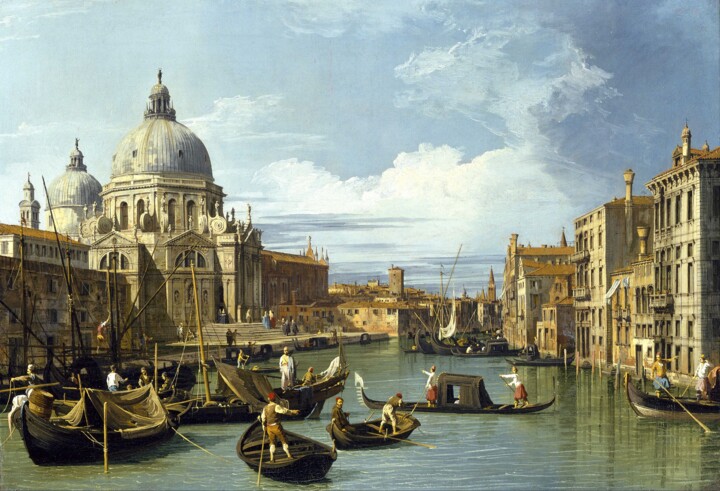



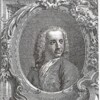
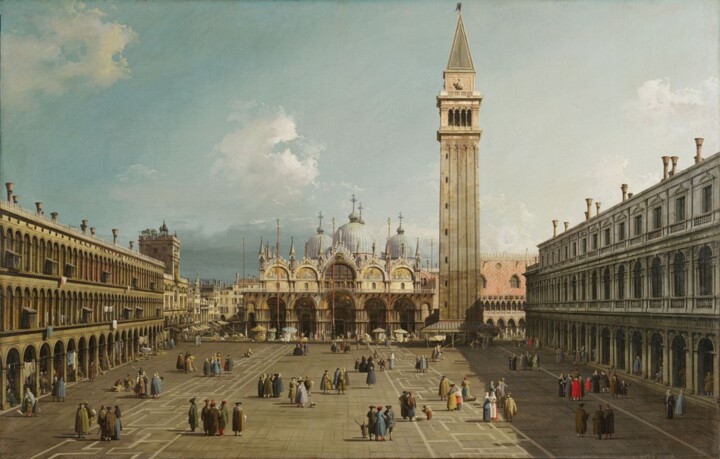 Canaletto
Canaletto
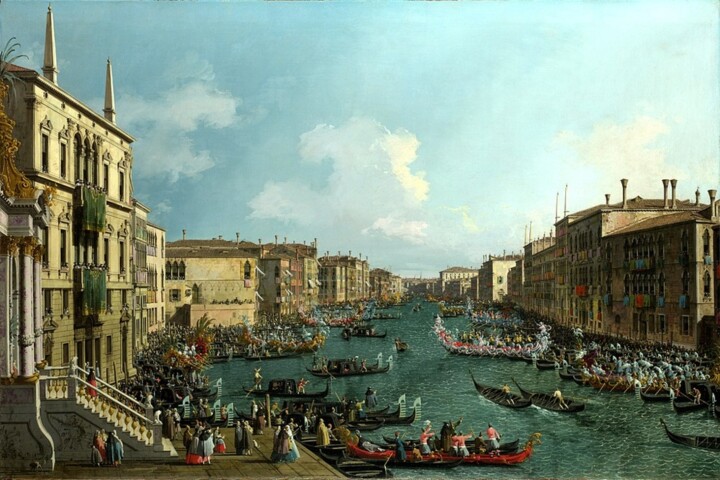 La Regata en el Gran Canal de Canaletto
La Regata en el Gran Canal de Canaletto

